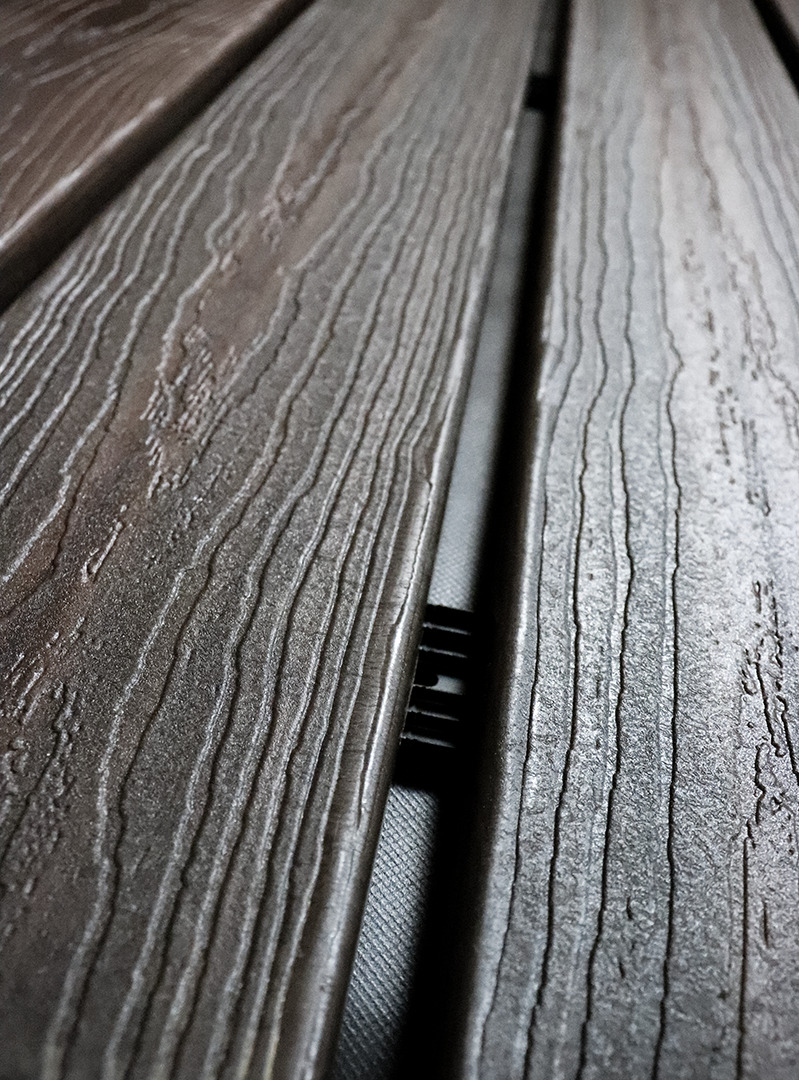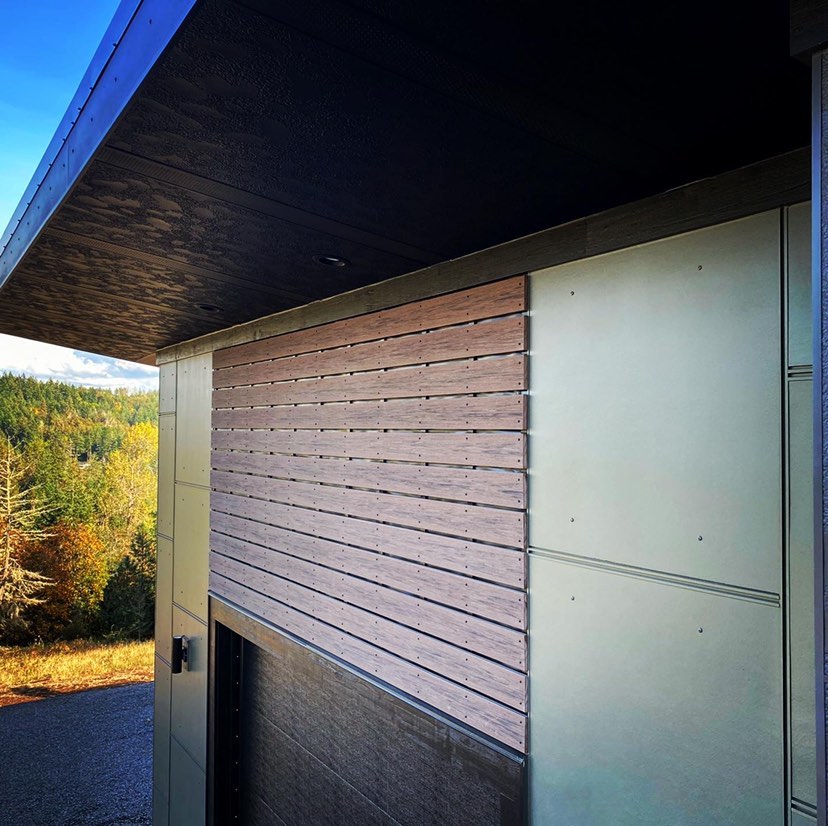A well-designed building envelope requires approaching the wall as a system that considers how each component works together. And that includes how the cladding style and installation will interact with the weather barrier behind it. If you’re installing siding with exposed gaps or seams, it’s important to specify a UV-rated housewrap and flashing system to ensure the integrity of the wall.
For What Applications Should UV-Resistant Housewrap Be Used?
Simply put, a UV-protected weather barrier system will be needed anytime the primary cladding isn’t covering 100% of the water control layer. This includes trendy open-joint cladding systems, in which siding (usually composite deck planks, exotic hardwoods, or reclaimed barnwood) is installed with wider gaps between each board, as well as some metal siding with spaces between panels, perforated metal cladding, and fiber cement panels with wider intersections (typically seen in light commercial projects).
Sometimes open space isn’t intentional but should be accounted for. For example, in Western resort areas like Montana, rough-sawn reclaimed barn board siding is common; the boards are typically irregular, which can create gaps upon installation, and the boards also are likely to shrink and shift over time. Conventional weather resistive barriers aren’t designed for this type of application, and a UV-resistant housewrap should be specified.
Another consideration is scheduling. Many standard housewraps are rated for exposure on the jobsite for about four to six months. But with the current challenges with the supply chain and labor, weather barriers on large custom homes may be exposed for longer. It’s worth considering a UV-rated housewrap like InvisiWrap UV, which can be left exposed for up to a year, until these challenges ease. Along with UV protection, the open joints in these cladding applications will need a rainscreen space behind the assembly to accommodate the extra rain getting through. This can be achieved with manufacturer-provided clips or by using our Batten UV, which provide multidirectional airflow and drainage along with UV resistance.
Why Is a UV-Resistant Wall System Necessary?
Cladding systems with even small exposed joints can diminish the integrity of the WRB over time. Traditional housewraps will begin to lose their water repellency. Some installers use black felt paper for aesthetic purposes, but that can break down even faster than conventional housewraps.
Instead, a UV-resistant housewrap that also comes in black can protect against the long-term exposure while also increasing drying potential and protecting against moisture.
For best results, consider a UV-Protected Rainscreen System, which combines Invisiwrap UV housewrap, HydroFlash UV+ flashing, and Batten UV rainscreen. These products work together to provide 25+ years of UV exposure behind open siding and can be left completely exposed for a full year ahead of cladding install.
Along with UV rays, open-joint systems also are more vulnerable to moisture, as more air and water can get past the primary cladding than with traditional siding installation methods. Cap fasteners should be used to better block water from getting behind the WRB; ideally in this type of installation, cap fasteners should be installed behind the furring strips. Taping all seams in this type of assembly also is crucial. Learn more about UV Protected Rainscreen Systems here.





